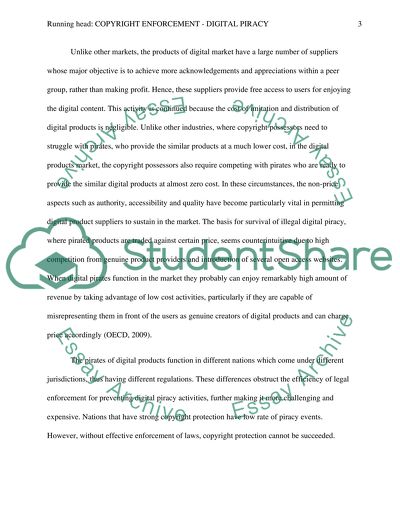Cite this document
(“Copyright enforcement - Digital Piracy Essay Example | Topics and Well Written Essays - 3000 words”, n.d.)
Retrieved from https://studentshare.org/law/1401715-copyright-enforcement-digital-piracy
Retrieved from https://studentshare.org/law/1401715-copyright-enforcement-digital-piracy
(Copyright Enforcement - Digital Piracy Essay Example | Topics and Well Written Essays - 3000 Words)
https://studentshare.org/law/1401715-copyright-enforcement-digital-piracy.
https://studentshare.org/law/1401715-copyright-enforcement-digital-piracy.
“Copyright Enforcement - Digital Piracy Essay Example | Topics and Well Written Essays - 3000 Words”, n.d. https://studentshare.org/law/1401715-copyright-enforcement-digital-piracy.


